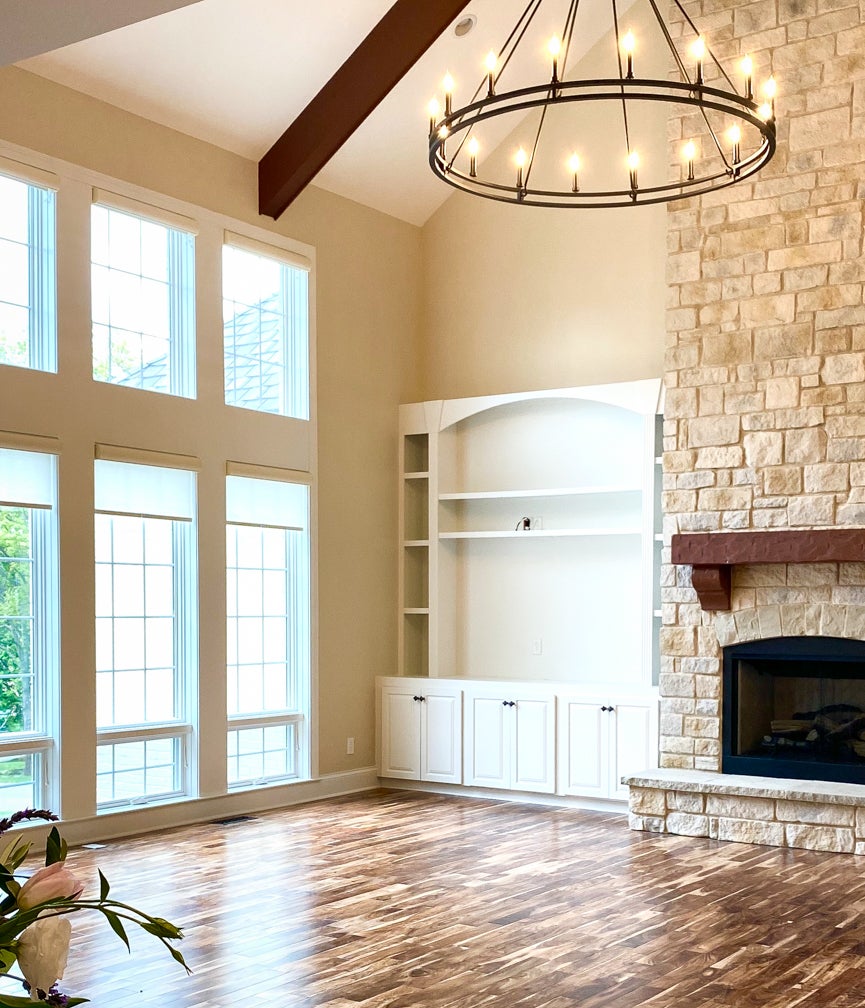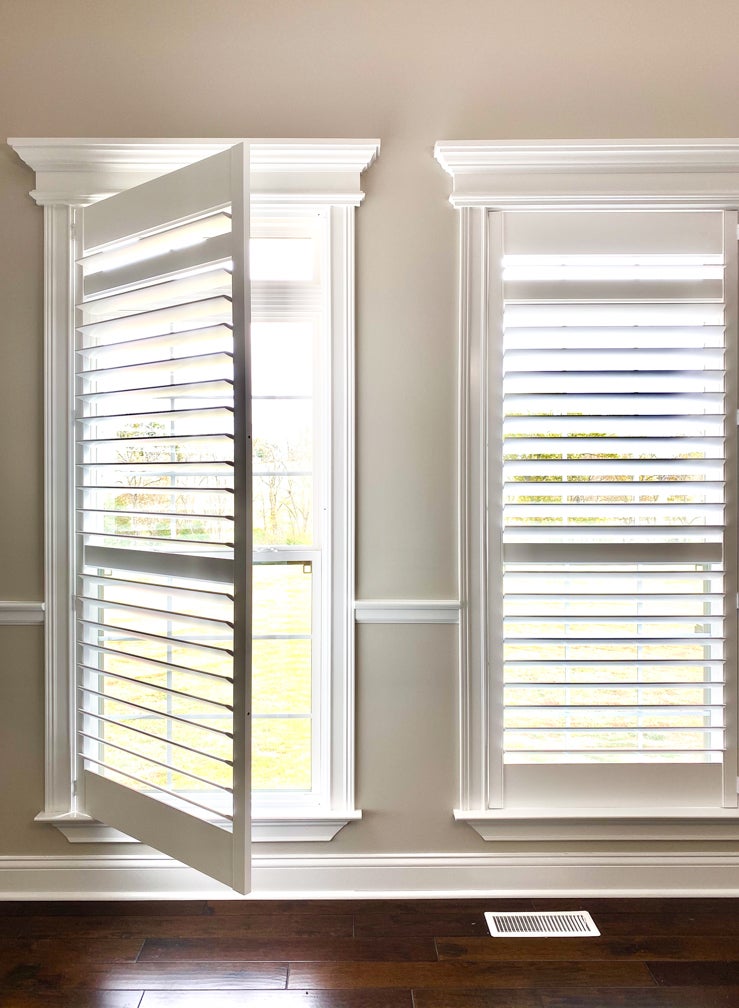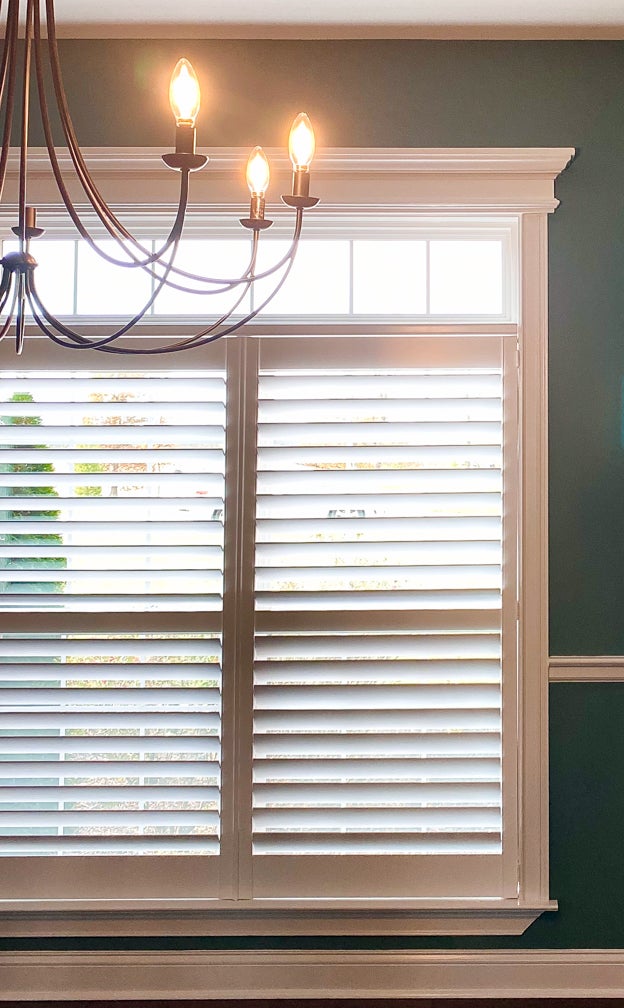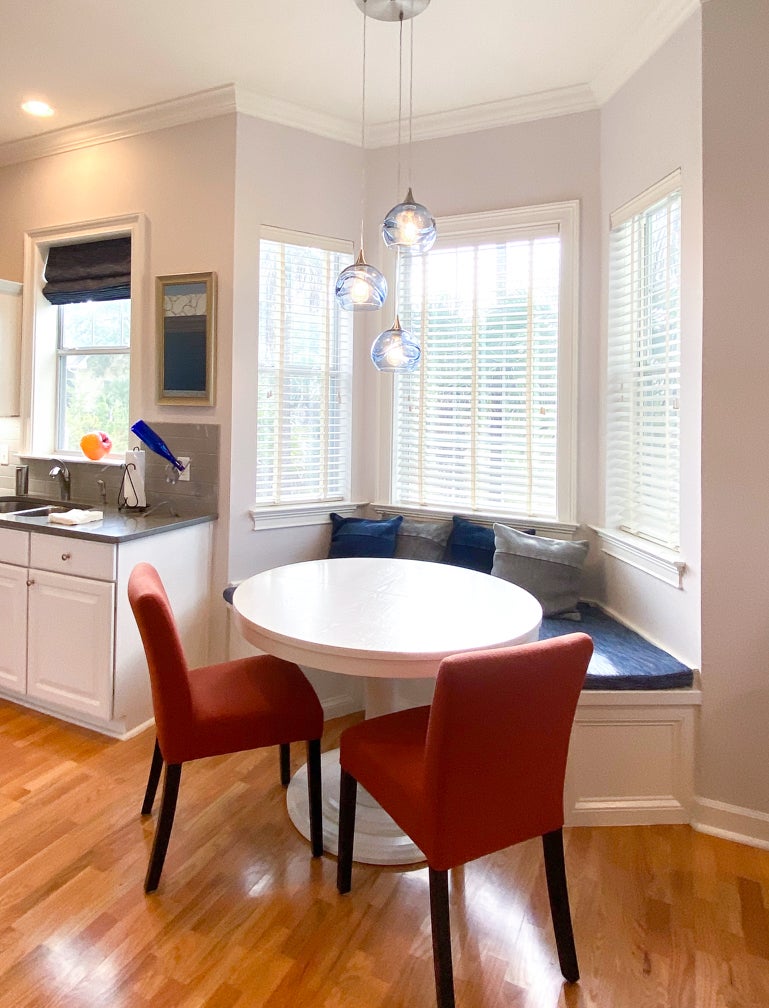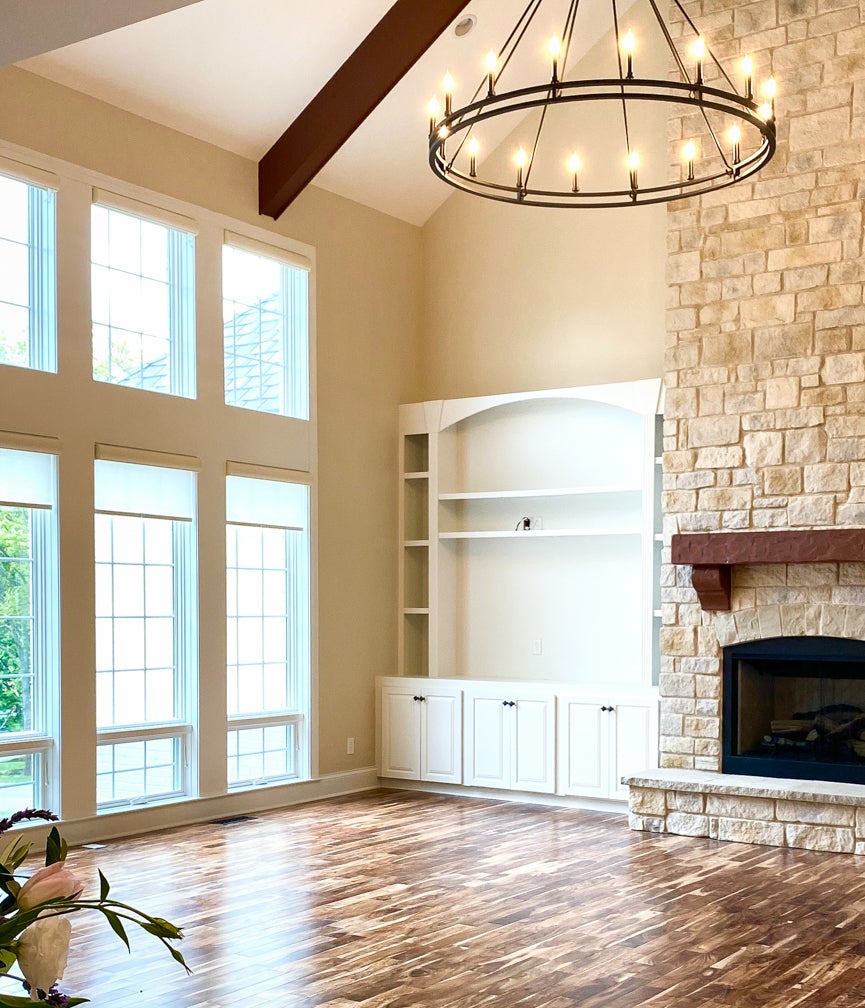Who could live without windows? The very nature of being able to see out into the world is vital. Natural light brings life into a home.
Window treatments are an integral part of designing a room. Whether it is looking in from the outside, or the ability to add color and fashion to interior rooms, your choice in window treatments becomes an important decision.
Trends in the window treatment industry go beyond traditional 2-inch wood blinds or drapery options. Woven shades with natural texture, shutters that provide a structural element, and roller shades in a variety of color and pattern are currently popular.
These offer practicality with clean lines and the ability to avoid dangerous dangling cords. Heavy, dust collecting drapery panels that cover entire windows are no longer the norm and are being eliminated. Much sought after open floor plans lead to more open windows. Technology is also playing a role. One simple remote control manages the light and privacy desired for high ceiling vaulted rooms.
Keep in mind that fewer window treatments may be the answer. The amount of money and trim carpentry that goes into the construction of windows may be all the decoration your windows need. Why cover attractive trim when you can enjoy the craftsmanship.
- Outside views. Curb appeal is important, along with a coordinated look from the inside. The general rule is to treat the front of your home with the same product. A coordinated look creates a thoughtful approach. Some designers choose to have the selected window treatment “staged’ in the same way. If you have blinds and want to raise the blinds halfway to create more daylight, then all of the blinds across the front of the house are raised halfway. To have window treatments staged in the same way creates a calm, collected presence. Mismatched and askew creates a chaotic impression.
- Inside views. As a counterbalance to the outside view, inside views become important to the inside guest or homeowner. Window treatments seen from the inside have the ability to add personality and color. While blinds and shutters are static in color, the addition of softly folded roman shades or roller shades can add warmth and texture. Decorative drapery panels (that do not close across the window) add formal styling to the windows without creating heaviness. Conversely, large windows require a large stack of fabric for full window coverage which leads to major expense. The combination of decorative panels and shades or blinds may solve the problem. Understand the goal before investing in the various products.
- Beautiful choices. Blinds remain the standard. Most homeowners opt for 2-inch window blinds for flexibility. They can be lowered completely, raised halfway, tilted or closed. They come in a variety of color, but variations of white are the norm. Shutters add structure and function in white or neutral options. Romans shades can add pattern and color, but are either up for a full view of outside, or down for total privacy. The same for drapery panels that cover the entire window span. They are either open or blocking all, or a portion, of the view.
- Custom vs. premade. Most big box stores can provide stock window treatments. Homeowners may find the color selections limited and the sizing frustrating. Warranties, return policies and installation requirements on precut stock options will leave you wondering if the upfront savings was worth the purchase. Custom products can compete with stock products when measuring, installation, product options and warranties are factored in.
- Professional help. Investment in professional help is worth the time and money. A professional’s experience and training will save money in the long run. You may not know what might be best for your windows. Technology, motorization and basic design expertise is worth the appointment. A design professional can access work rooms for various window treatments, but a smart designer will use the resource of window treatment professionals to save you money while styling your windows beautifully.
